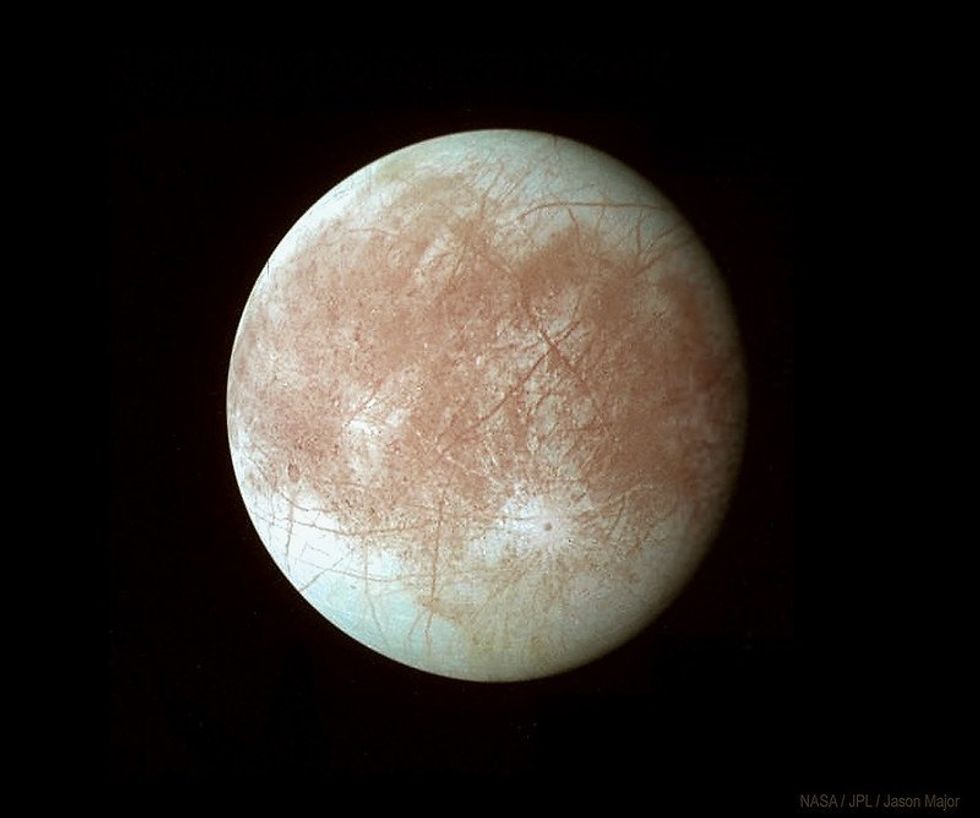Catherine Shuttleworth
May 31, 2024
It Snows Upside Down, Underwater on Jupiter’s Moon Europa
ZMG - Amaze Lab / VideoElephant
It's been revealed that Jupiter's fourth-largest moon, Europa, has been hiding something beneath its icy crust after NASA's Juno spacecraft captured an image of a salty ocean.
Europa is closer to a planet than a moon, it has a magnetic filed, a tenuous oxygen atmosphere and a liquid iron core. Its icy crust is 11 miles (18 km) thick with an ocean beneath it, and now, thanks to Juno, it appears that salty ocean can bubble up through the ice.
The image captured by Juno was the first high-resolution image of Europa since NASA's Galileo spacecraft passed by in 2000. The images show that the icy crusts at the north and south poles of the moon are not what researchers once thought. Now, it seems that Europa's icy shell is free-floating, moving about the moon.

The terrain of Europa shows a featured nicknamed "the Platypus" and contains hummocks, ridges, ice blocks and dark reddish-brown material. Scientists now suspect this is where Europa's ice shell allows pockets of saltwater from the moon's subterranean ocean to pool.
31 miles (50km) above "the Platypus" we can see possible stains, which are thought to be deposits from plumes of saltwater rising up to the surface from Europa's ocean.
Juno's mission ends in 2025, however two more missions are bound for Europa. Later this year, NASA's Europa Clipper will launch and arrive in 2030. The European Space Agency's Juice (Jupiter Icy Moons Explorer) which launched last year, will arrive in 2031 and tour three of Jupiter's moons: Ganymede, Callisto and Europa.
Sign up to our free Indy100 weekly newsletter
Have your say in our news democracy. Click the upvote icon at the top of the page to help raise this article through the indy100 rankings.
How to join the indy100's free WhatsApp channel
Top 100
The Conversation (0)














